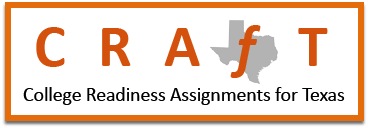![]() IV. Science, Technology, and Society VI. Biology
IV. Science, Technology, and Society VI. Biology![]()
A. Matter/states of matter
1. Know modern theories of atomic structure.
a. Describe the characteristics and typical locations of sub-atomic particles such as protons, neutrons, and electrons.
b. Describe what happens when an atom becomes an ion.
2. Understand the typical states of matter (solid, liquid, gas) and phase changes among these.
a. Explain the differences in volume, shape, and strength of attractive forces for each state of matter.
b. Predict changes in the behavior of a gas sample as pressure, volume, or temperature is changed.
c. Identify the conditions under which a compound will be solid, liquid, or gas from a given phase diagram of a compound.
B. Energy (thermodynamics, kinetic, potential, energy transfers)
1. Understand the Laws of Thermodynamics.
a. Express thermodynamic principles in mathematical or symbolic statements.
b. List and give examples of each law of thermodynamics.
2. Know the processes of energy transfer.
a. Cite specific examples of such transfer processes in biological, chemical, physical, and geological systems.
b. Compare and contrast kinetic and potential energy.
C. Change over time/equilibrium
1. Recognize patterns of change.
a. Describe examples of physical and biological systems that remain stable over time, as well as examples of systems that undergo change.
b. Describe feedback mechanisms that lead to stability in a system (homeostasis) and provide examples of such mechanisms.
c. Describe cyclic change in terms of frequency, amplitude (maximum and minimum values), duration, and controlling factors, and illustrate these descriptions with examples of real cycles.
d. Know that things can change in detail but remain the same in general (e.g., players are substituted in and out of the game but the team continues, individual cells are replaced but the organism remains alive), and give discipline-specific examples.
e. Know that in biological systems, present forms arise from the materials and forms of the past both at the individual level (growth/development) and at the population level (evolution/speciation), and in ways that can be explained. Describe examples that illustrate such events and processes.
f. Use graphs, symbolic equations, and other techniques for depicting and analyzing patterns of change.
D. Classification
1. Understand that scientists categorize things according to similarities and differences.
a. Correctly use nomenclature for classification.
b. Describe the characteristics of the different domains, kingdoms, and major phyla within the animal and plant kingdoms.
c. Understand the Periodic Table and the atomic characteristics on which it is based.
d. Know the major categories of minerals and describe characteristics that distinguish one from another.
e. Recognize various soil types and the various horizons in soil structure; describe characteristics that distinguish one from the other.
f. Know the Linnaean system of classification, taxonomy of organisms, and alternative classification systems such as cladistics.
g. Distinguish among elements, compounds, and mixtures.
E. Measurements and models
1. Use models to make predictions.
a. Create a model of a system and use that model to predict the behavior of a larger system.
2. Use scale to relate models and structures.
a. Create a model of a larger system, properly scaling the model.
3. Demonstrate familiarity with length scales from sub-atomic particles through macroscopic objects.
a. Compare the order of magnitude estimates for metric sizes of a variety of objects (e.g., atomic nucleus, atom, molecule, grain of sand, pinhead, fingernail, baseball, city, state, country, planet, star).


 Show Printable Version
Show Printable Version




